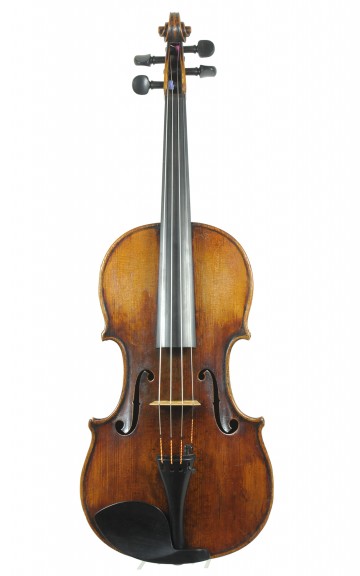Nicolas Lupot shaped 19th century French violin making alongside J. B. Vuillaume. A portrait of the “other master” by Corilon violins
"Astonished" was what violinist, composer and conductor Ludwig Spohr said when he first he heard the “full and powerful sound” of a Nicolas Lupot violin; as he wrote in his 1860 autobiography, he immediately exchanged his historic German instrument for the Lupot and then played it "from that moment on during all of my travels." Spohr's astonishment can be regarded as a late discovery, given that Nicolas Lupot's work had long since enjoyed great acclaim in his home country and already reached the full extent of its influence on French violin marking. As the “French Stradivarius” and a highly sought after teacher, Nicolas Lupot contributed to the training of a great number of outstanding luthiers in the course of his career, including Charles- François Gand and Auguste Sébastien Philippe Bernardel, who later joined forces and established the esteemed "Gand & Bernardel" workshop. In terms of his impact on modern French violin making, to this day Nicolas Lupot is often mentioned in the same breath as his famous colleague Jean-Baptiste Vuillaume; he too made history by inspiring a school that is named after him.
Nicolas Lupot was born on 4 December 1758 to the Lupot family of influential Mirecourt violin makers, but Nicolas Lupot spent his childhood years in Stuttgart, where his father, François Lupot, served as the royal "court lute and violin maker." It was François Lupot who introduced Nicolas to the art of violin making: he taught his son the approach which was commonplace in France at the time, in which the ideals of later Italian masters were the template to be followed. Orléans, the city where the family moved when Nicolas was twelve, was home to his first creative phase. Around 1794, Nicolas Lupot made his way to Paris, where he eventually began working under François Pique, whose technique had its roots in very similar aesthetic perspectives thanks to Pique's training in Mirecourt. This business relationship lead not only to many years of mutually beneficial cooperative endeavours but a deep friendship as well.
After four years, Nicolas Lupot struck out on his own and opened a workshop on the Seine: initially he worked on Rue de Grammont, and in 1806 he moved his workshop to Rue Croix-des-Petits-Champs. That year he issued the publication "La Chélonomie ou le parfait luthier," an essay on violin making by Abbé Sibire and a work to which Nicolas Lupot had contributed the main content. Despite his strong orientation towards his great role model, Stradivari, Nicolas Lupot's work shows an undeniable artistic independence which is manifest not only in details such as the shape of the sound holes and the fishbone purfling he used. Nicolas Lupot's instruments also have an inimitable character with regard to their sound, which made such a lasting impression on Spohr and others.
Political developments in France after the Congress of Vienna led to Nicolas Lupot being granted an exceptional commission. When the monarchy was restored, Louis XVIII ascended the throne in 1814 and appointed the highly esteemed master Nicolas Lupot as the luthier for the royal chapel and supplier to the royal music school. This honour was one Lupot emphasised with justified pride from 1815/16 onward on his instrument labels: "N. Lupot Luthier de la Musique du Roi et de l´École Royale de Musique.". Nicolas Lupot died in Paris on 14 August 1824.
Related articles:
Jean.Baptiste Vuillaume: notes on his life and work
Joseph Hel: a master in the Vuillaume tradition
François Xavier Tourte, founding father of the modern violin bow
John & Arthur Beare: expertise in changing times
W. E. Hill & Sons – on the Mt. Parnassus of the art of violin making
Jean-François Raffin: ten hours - and not a word
Eugene Sartory: the modern classic of bow making
François Nicolas Voirin and the new French violin bow
Mirecourt: the spacious home of French violin making
How to select a violin, value and violin appraisal
Contemporary violin makers - the modern artisans





